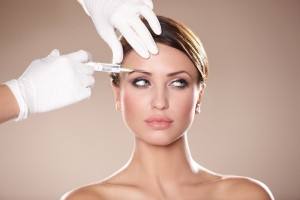When injectables are done successfully, you get a natural, younger face that still looks like “you” with little to no downtime. Just ask former 90210 star Jenny Garth—she admits that she’s been a fan of Botox since 2008, among many an A-lister who also gets injected. Vanessa Williams says she uses Botox, but sparingly. Jenny McCarthy has been quoted saying she gets Botox injections in her forehead every two months. Singer Kylie Minogue has admitted to using Botox in the past, but recently has been quiet about injections. Kim Cattrall has been quoted saying she uses Botox to get rid of a wrinkles in her forehead. Full House favorite, Lori Loughlin, says the results of Botox are incredible and likens the results to looking like you just got back from vacation. Virginia Madsen is so impressed with how injectables have helped her fight off the signs of aging, she has actually appeared in commercials for Botox and Juvéderm. Daisy Fuentes has been quoted saying that as long as you don’t go overboard with it, Botox has a place, in your face, as you age. Courtney Thorne-Smith, another Botox brand celebrity representative, says she likes it, it works, and it’s just that simple. She’s been a fan of injections for the last 10 years. Lisa Rinna says she uses Botox every three months to ward off the hereditary scowl marks that run in her family.
And remember, if you’re considering injectables, make sure you are seeking treatment from a reputable and experienced board-certified dermatologist or plastic surgeon that uses FDA-approved fillers.
At the office of Dr. Mark Bishara, with offices in Mansfield and Southlake, TX- we offer FDA approved fillers such as Botox and Juvederm. Our procedures help patients look and feel their best and are designed to improve your appearance. Please call our office to schedule an appointment for Botox or Juvederm at (817) 473-2120 or visit our website at www.MarkBisharaMD.com.








